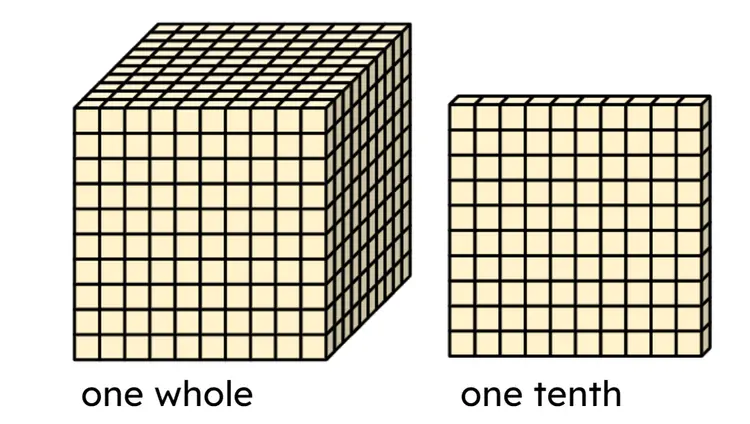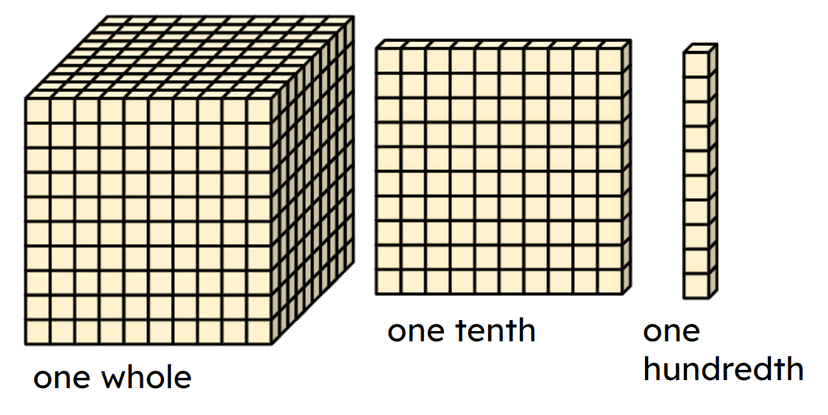Myths about teaching can hold you back
- Year 5
Multiplying and dividing a number by 10, 100 and 1,000
I can explain the effect of multiplying and dividing a number by 10, 100 and 1,000
- Year 5
Multiplying and dividing a number by 10, 100 and 1,000
I can explain the effect of multiplying and dividing a number by 10, 100 and 1,000
These resources were made for remote use during the pandemic, not classroom teaching.
Switch to our new teaching resources now - designed by teachers and leading subject experts, and tested in classrooms.
Lesson details
Key learning points
- To multiply a number by 1,000 move the digits three places to the left - this makes the number 1,000 times the size.
- To divide a number by 1,000 move the digits three places to the right - this makes the numbers 1,000th times the size.
- A place value chart can be used to explain how the digits move when you multiply or divide by 10, 100 and 1,000.
- Use a Gattengo chart can be used to explain how the digits move when you multiply divide by 10, 100 and 1,000.
- Dividing by 10, 100 or 1,000 is equivalent to multiplying by 0.1, 0.01 or 0.001 respectively.
Keywords
Thousandth - One-thousandth is one part in one thousand equal parts.
Equivalent - If something is equivalent, it has the same value. For example, £1 is equivalent to 100 p - they have the same value.
Common misconception
Children may confuse use of the Base 10 equipment. They may also confuse the equivalence between dividing by 10/100/1,000 and multiplying by 0.1/0.01/0.001.
The large cube now represents one whole. The smaller blocks represent decimal fraction numbers. Use stem sentences to support common mistakes: when a number is divided by ___, it is the same as multiplying by ___
To help you plan your year 5 maths lesson on: Multiplying and dividing a number by 10, 100 and 1,000, download all teaching resources for free and adapt to suit your pupils' needs...
To help you plan your year 5 maths lesson on: Multiplying and dividing a number by 10, 100 and 1,000, download all teaching resources for free and adapt to suit your pupils' needs.
The starter quiz will activate and check your pupils' prior knowledge, with versions available both with and without answers in PDF format.
We use learning cycles to break down learning into key concepts or ideas linked to the learning outcome. Each learning cycle features explanations with checks for understanding and practice tasks with feedback. All of this is found in our slide decks, ready for you to download and edit. The practice tasks are also available as printable worksheets and some lessons have additional materials with extra material you might need for teaching the lesson.
The assessment exit quiz will test your pupils' understanding of the key learning points.
Our video is a tool for planning, showing how other teachers might teach the lesson, offering helpful tips, modelled explanations and inspiration for your own delivery in the classroom. Plus, you can set it as homework or revision for pupils and keep their learning on track by sharing an online pupil version of this lesson.
Explore more key stage 2 maths lessons from the Calculating with decimal fractions unit, dive into the full primary maths curriculum, or learn more about lesson planning.

Licence
Prior knowledge starter quiz
6 Questions
Q1.Match the factors to their product.
50
600
80
800
40
Q2.Match the equation to the correct product or quotient.
500
6,000
8
80
5
Q3.Look at the images of base 10 blocks and complete the sentence. There are tenths in one whole.

Q4.Look at the images of base 10 blocks and complete the sentence. There are hundredths in one whole.

Q5.Look at the images of base 10 blocks and complete the sentence. There are hundredths in one tenth.

Q6.Dividing by 10 is the same as multiplying by
Assessment exit quiz
6 Questions
Q1.One-thousandth is composed of parts of one-hundredth.
Q2.Which equations can be formed from this statement?
One tenth has been divided into 100 equal parts. Each part is one thousandth of the whole.
Q3.When a number is multiplied by 1,000, the digits move places to the left.
Q4.Use the Gattegno chart to complete the sentence. 0.001 is times smaller than 0.1

Q5.Match the division expression to its equivalent multiplication expression.
1 × 0.1
0.1 × 0.1
1 × 0.001
0.01 × 0.01
0.1 × 1
Q6.Match the equations to their product.
5,000
5
6
500
60
50


